Manitou’s Mattoc range was refreshed in 2023 with three levels of fork – Comp, Expert and Pro (tested here) – each offering 110-150mm of travel, adjustable internally in 10mm increments, and with options for both wheel sizes.
Manitou is aiming the Mattoc at everything from cross-country (XC) riders to ‘light enduro’ – basically the more aggro end of trail riding.
The 29in version comes set to either 120 or 140mm and with a 44mm offset, the 27.5” version is available with both 37mm and 44mm offsets.
I tested the 29in 140mm fork with a 44mm offset. It weighed 1,797g with an uncut steerer. This is around 100g lighter than an equivalent RockShox Pike, so competitive.
I came away incredibly impressed by the Mattoc Pro. It’s impeccably supple, offers great end-stroke control, is easy to alter and adjust for rider styles and preferences, and despite a low weight, is stout enough to handle most trails.
Manitou Mattoc Pro details
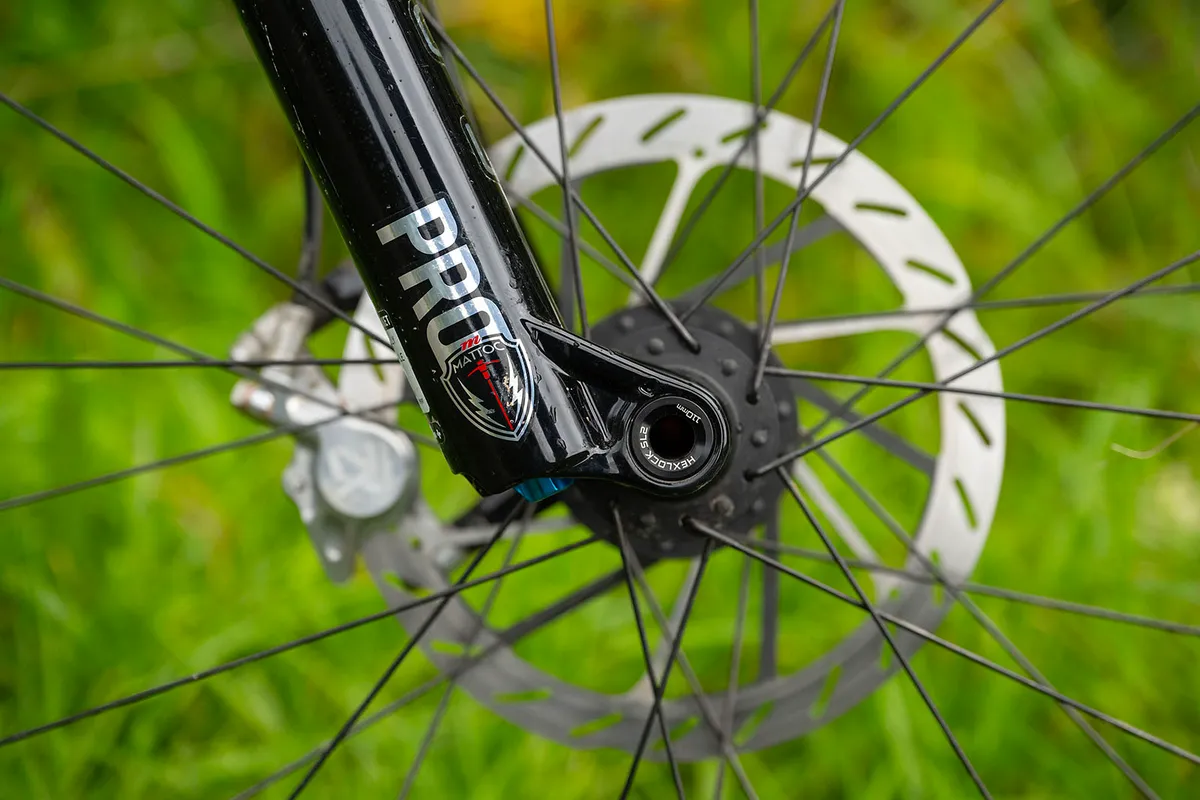
The fork’s 7000-series alloy lowers have the brand’s tell-tale reverse arch (into which its own three-bolt fender fits snugly). The 34mm-stanchion upper tubes slide into this. At the top, a forged aluminium polished crown sits pretty.
The wheels are secured with the Hexlock SL2 axle. This is a bolt-thru axle with a hexagonal axle/fork interface, there to add stiffness. A 6mm hex bolt pushes the axle out, for wheel removal.
The fork’s Post Mount brake mount is built for 160mm discs, with adaptors required for larger rotors.
This top-end mountain bike fork receives all of Manitou’s bells and whistles. The Dorado air spring, borrowed from the brand's iconic WC DH fork, is paired with its IRT (Infinite Rate Tune) mid- and late-stroke tuning system.
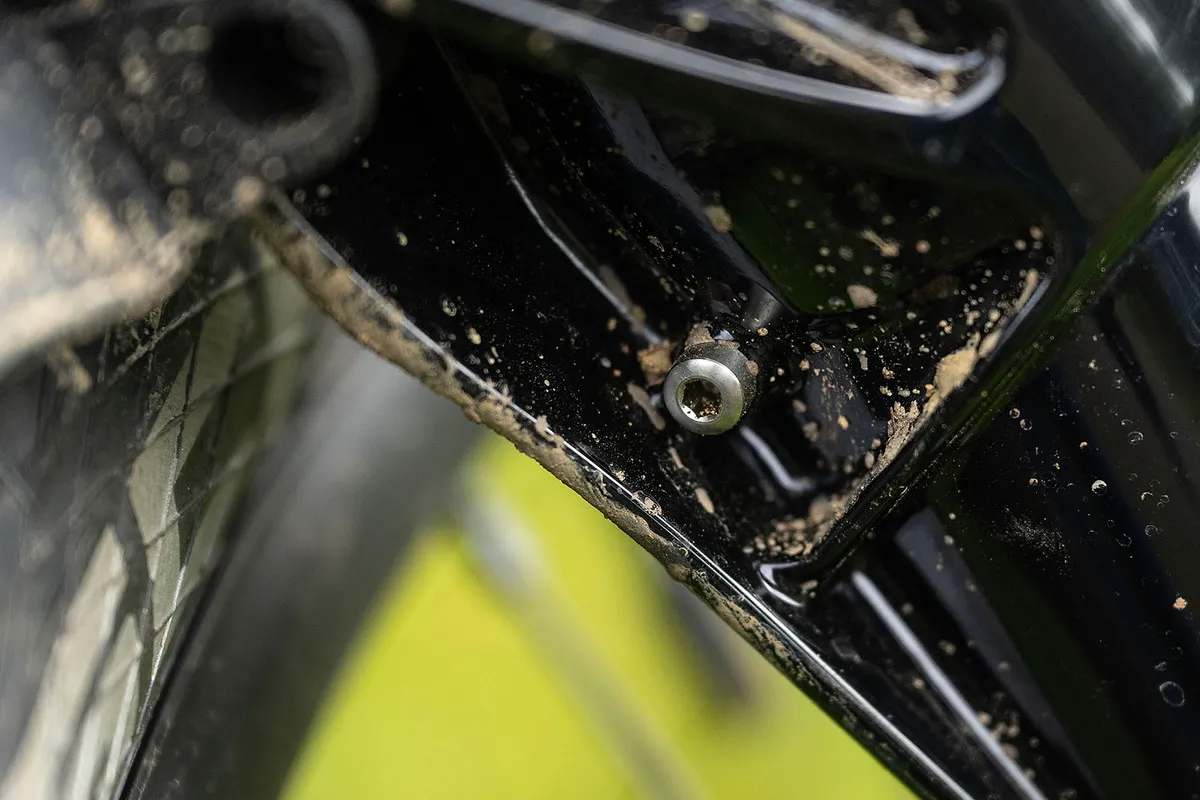
On this top-flight fork, the IRT is a secondary air spring that you inflate to tune feel, though on lower-end forks it's a more traditional variable-volume spacer system.
The sealed MC2 damper with hydraulic bottom-out offers high- and low-speed compression and single rebound adjustment.
The damper has a bladder system to compensate for heat build-up on long runs.
There are bleed valves on both sides of the fork’s lowers, to release excess pressure that’s built up over time, at altitude or due to the weather. These are accessed with a 3mm hex key.
Manitou Mattoc Pro set up details
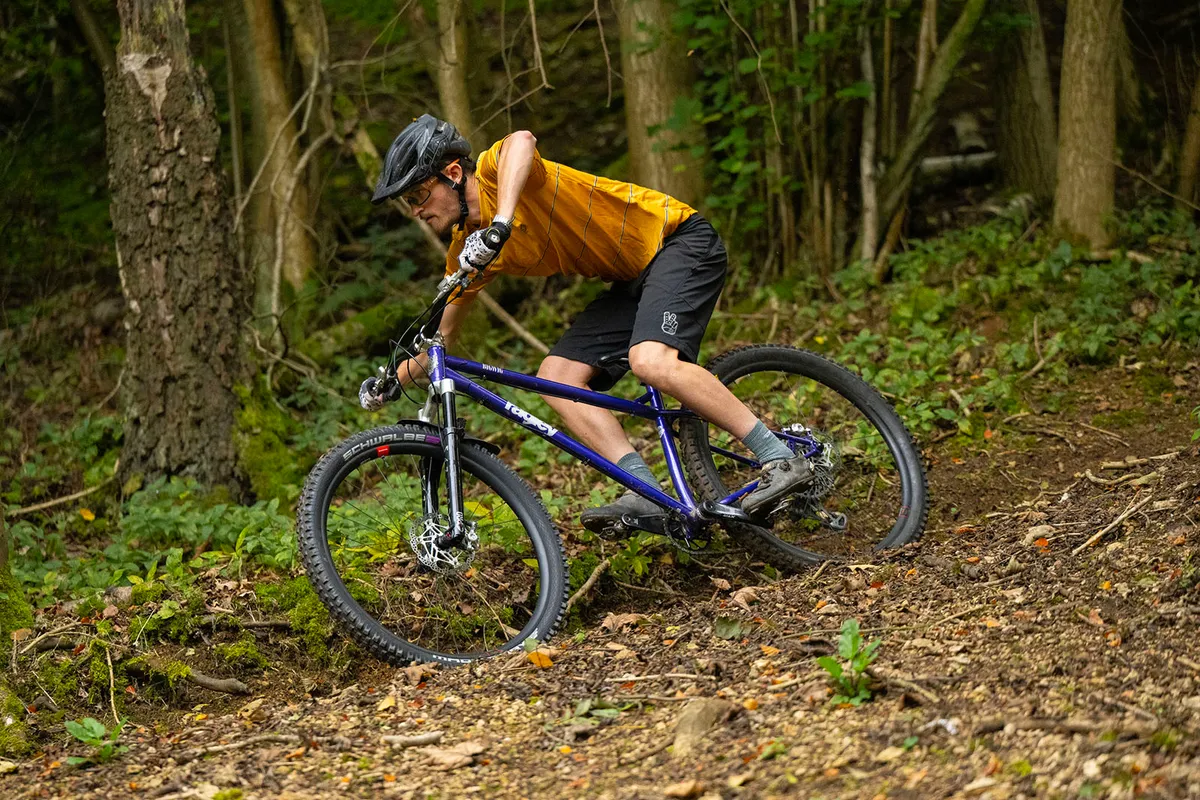
The bulk of my testing was done on an aggressive hardtail, where I wanted both chassis stiffness and plenty of mid-stroke support.
The IRT valve is inflated first, before the main Dorado Air Spring valve, at the bottom of the fork, is inflated. This inflates the main positive spring.
I followed the recommended pressures and recommended damper settings for my fork’s travel and my weight.
Following plenty of varied laps, I added around 8psi to the IRT valve.
Manitou Mattock Pro performance

Despite its relatively skinny legs, the Mattoc feels sturdy, thanks in part to the reverse arch that solidly braces the lower legs and subtle bulges in the lowers to maximise strength in key areas, along with the Hexlock axle.
The fork feels similar to a RockShox Pike in stature and only slightly more fluttery than a Lyrik or Fox 36 under heavy braking or over stutter bumps.
Send the Mattoc over committed rocky sections of trail and it holds a line with confidence befitting a stouter-looking fork.
Torsional stiffness is ample, with no awkward twisting or twanging apparent on off-camber lines or tight corners under braking.
Supreme suspension
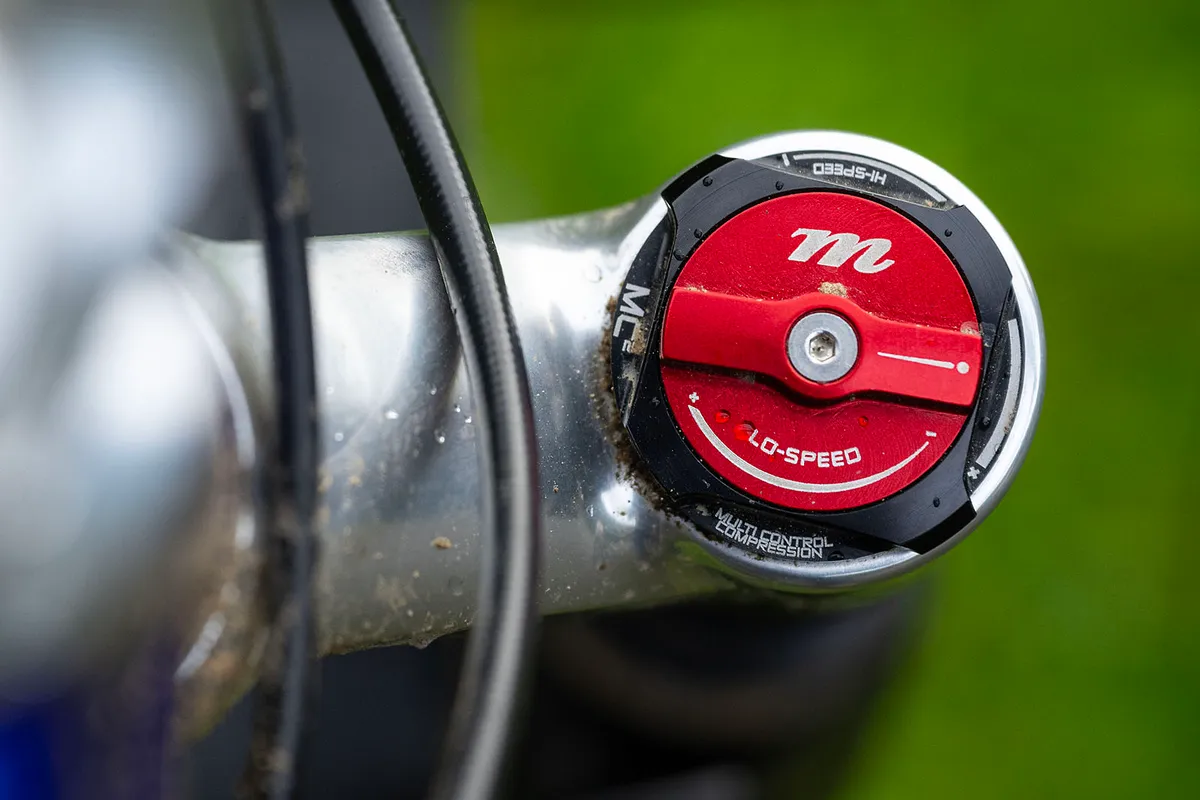
When it comes to bump-eating ability, I’ve been very impressed.
After repeated runs testing out the various combinations of high- and low-speed compression damping, I found the suggested settings for my weight were pretty much spot-on. Unlike many mountain bike forks, I didn’t default to setting the pressure and fully opening the compression dials to get things feeling comfortable.
Instead, I was towards the middle of the adjuster range, suggesting a fork that’s going to be usable by a wide variety of riders of different shapes and sizes.
The range of adjustment is good, from the highest levels of damping to the lowest, with individual clicks of the dials making small, but appreciable differences.
Playing with pressure
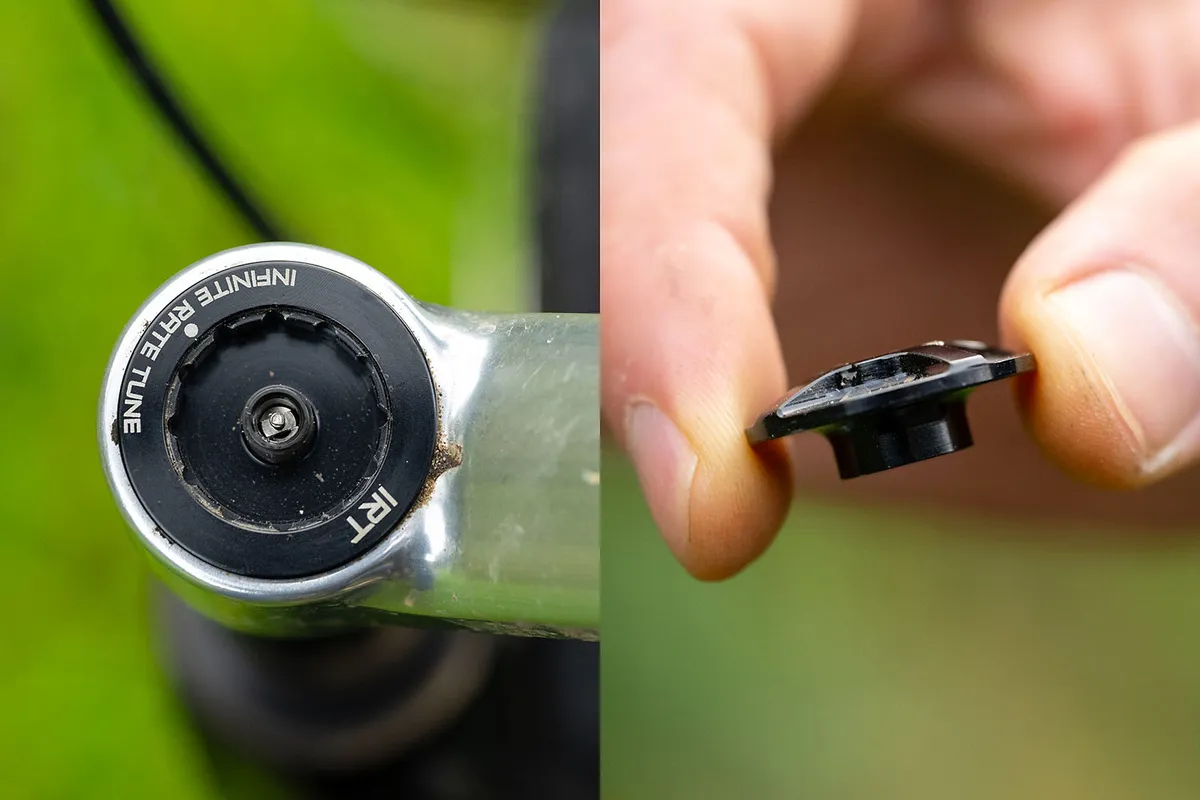
I also spent plenty of time playing with the IRT pressure.
Adding pressure gives more mid-stroke support and bottom-out resistance, while reducing it results in a more linear feel to the air spring. It feels as though it has more impact earlier in the stroke than a traditional volume spacer does.
With the fork tested on a hardtail, I wanted extra mid-stroke support, in order to enable me to ‘ride the fork’ more, with my weight further forward than it might be on a full-suspension bike.
Early-stroke suppleness, and therefore comfort and grip, is exceptional, with the fork almost settling into its travel when the bike is placed on the ground.
There’s virtually no stiction present when you push on the bar. This contributes to an impeccably comfortable feel through the bar.
This smoothness continues deeper into the fork’s travel.
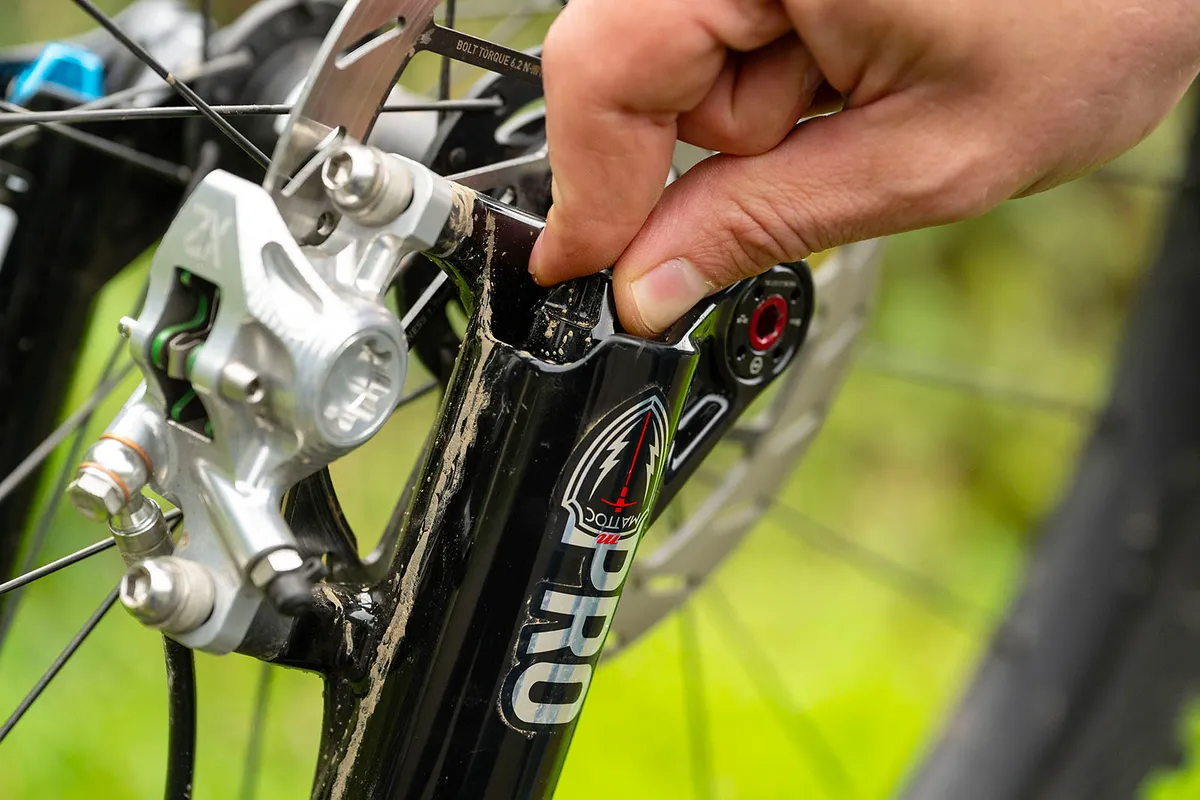
The mid-stroke is wonderfully composed, bolstered by the additional control the IRT gives.
With recommended pressures, the fork is active in its mid-stroke, easily smoothing out rooty chatter and dealing comfortably with chunky rock gardens.
With a touch more pressure, the fork feels calmer. It stays propped up, higher in its travel, which is key on a hardtail. It’s still smooth and still deals with those mid-stroke impacts, but it’s a touch less active, as you’d expect.
This does, however, enable you to ride the fork more aggressively, helping you force the bike over technical sections of trail, and pump through rollers, risers and lips.
There’s a hint less bob when you’re putting the power down, too.
Regardless of how I set up the IRT valve, I was able to access all of the fork’s travel, though. When I got deeper into the stroke, the fork didn’t complain – clearly, the HBO (hydraulic bottom out) makes a real difference in the bottom 30mm of its travel.
Back at home
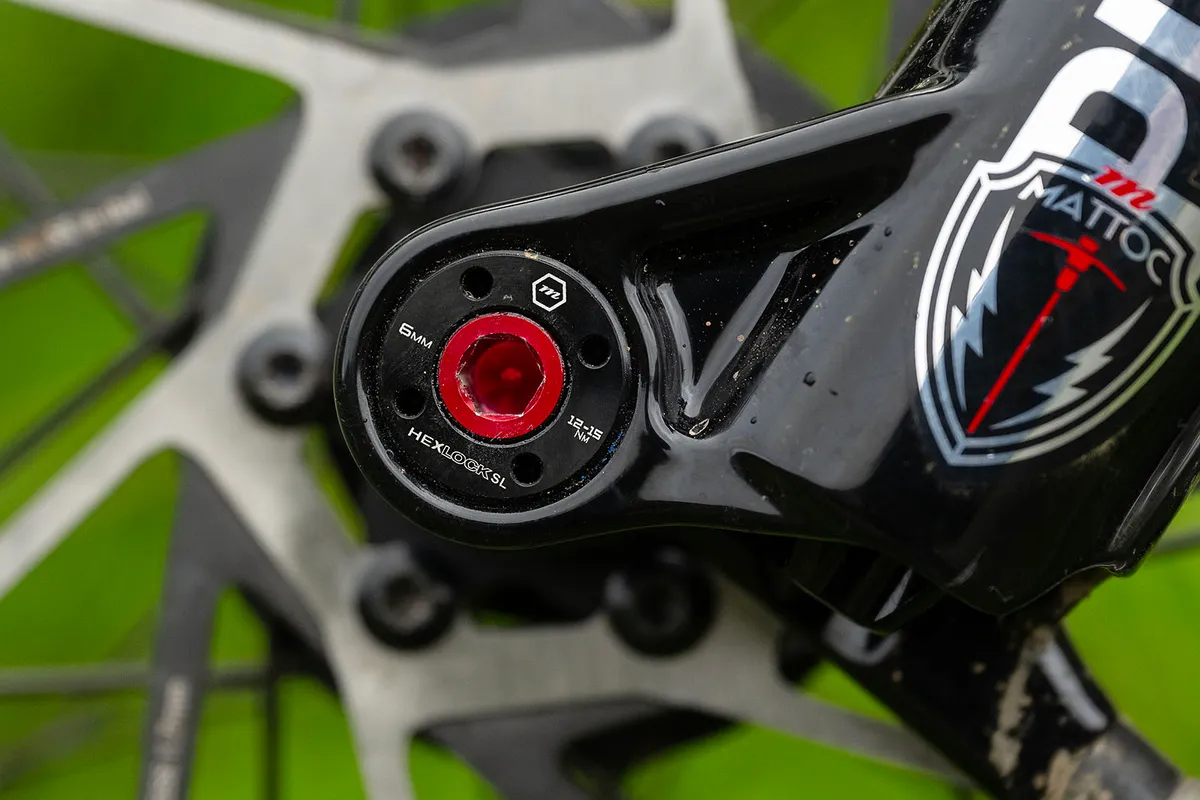
When it comes to living with the Mattoc, I've found it okay but not without fault.
The recessed air-spring valve at the base of the fork is harder to screw some pumps onto than others and the top cap for the IRT is too low-profile to grab with gloves on.
I’ve also found the Hexlock axle more fiddly than competitor bolt-thru axles.
A 6mm hex key pushes the axle out from the other side of the fork.
While this works just fine, re-fitting the axle is more tricky, requiring the axle’s hexagonal interface to line up and the threads to bite. It would be easier if you could grow a third hand – one to steady the bike, one to push the axle into its seat and one to spin the hex key.
The included fender is more effective than the stubbier options provided on RockShox forks, but is less effective than longer, after-market options.
Manitou Mattoc bottom line
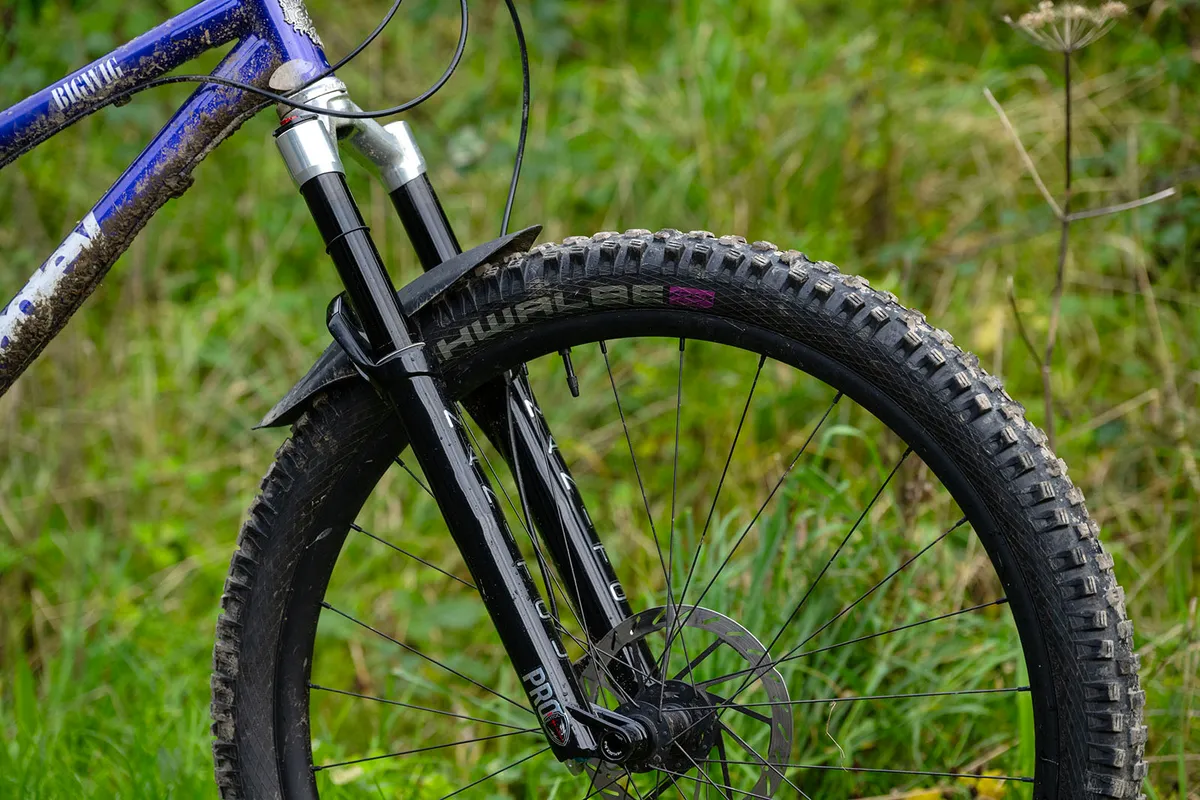
While forks from RockShox and Fox dominate the market, the Mattoc proves you can look away from the bigger brands when it comes to suspension.
The Mattoc might not really be XC-light, but it’s definitely a lighter-weight trail fork that can handle a whole lot of terrain.
The tech Manitou has poured into the fork pays dividends, in an exceptionally supple-feeling fork that offers grip and comfort, with ample control late into its stroke. The range of adjustment is extremely usable, too.
Product
| Brand | Manitou |
| Price | €1260.00, £1323.00, $1050.00 |
| Weight | 1797g |
Features
| Spring type | air |
| Wheel size | 29in_700c |
| Offset | 44.0000 |
| Offset | MILLIMETER |
| Travel | 140.0000 |
| Travel | MILLIMETER |
| Stanchion diameter | 34.0000 |
| Stanchion diameter | MILLIMETER |
| Features | Sizes: 29in and 27.5in available Offset: 37mm or 44mm Travel: 110-150mm |
